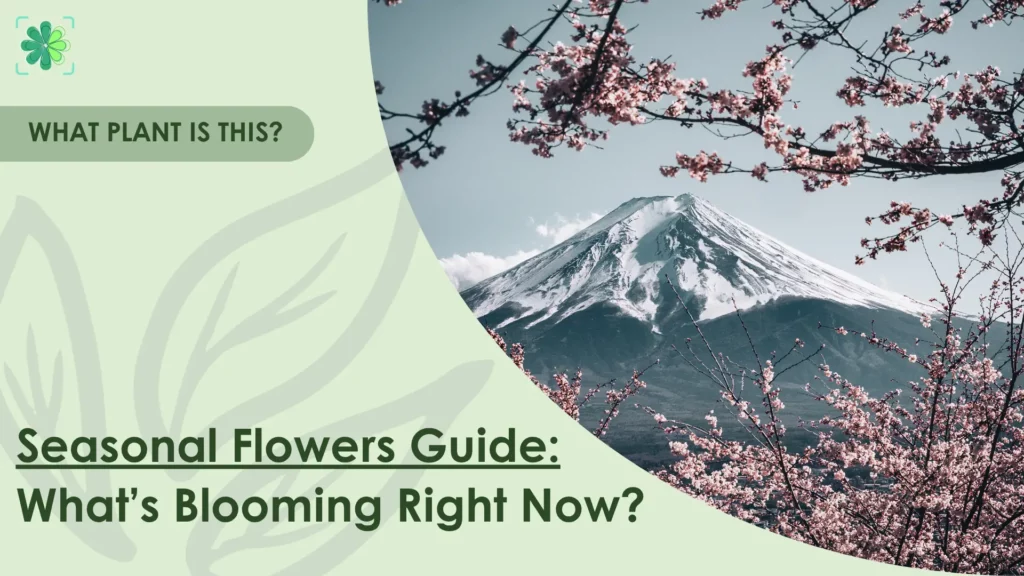
This seasonal flowers guide helps you see what’s blooming right now, from early spring bulbs to bold summer favorites and cold-hardy winter picks. It also explains how bloom times change depending on your climate, whether you’re in a tropical region or a cooler zone. You’ll find planting tips, care advice, and suggestions for flowers that bloom year-round. Let’s dive in!
How to Use This Seasonal Flowers Guide?
1. Understand how seasons affect blooming
Changes in light, temperature, and soil influence flowering. Early spring bulbs, such as tulips and daffodils, respond to longer daylight hours and thawing ground, while summer favorites like sunflowers and zinnias thrive in full sun and heat. In colder months, blooms slow down, but hardy varieties or evergreens still appear.
2. Consider your regional climate
In temperate zones, plants follow a predictable four-season pattern. In tropical areas, bloom cycles may align with rainy or dry seasons instead. The same species might flower at different times depending on where you live, so regional context is key when using any seasonal flowers guide.
3. Account for growing conditions
Outdoor plants are most influenced by the natural seasons. Indoor flowers and greenhouse-grown varieties often bloom outside the usual cycle due to controlled environments. If you’re unsure what’s in season locally, check gardening calendars or use plant ID apps like Planteyes for real-time guidance. Now, let’s start to discover seasonal flowers!
Spring Flowers (March – May)
Spring marks a decisive shift in the garden. As daylight lengthens and the soil gradually warms, dormant plants awaken, and the first waves of blooms begin. This is the season where bulbs planted in fall reward your patience, and perennials reappear with fresh growth. Let’s explore what typically blooms each month, along with ideal planting windows to maximize color and variety in your garden.
1. March
March is the true beginning of the flowering year in temperate zones. While some regions still face frost, early bloomers don’t wait. Many spring bulbs and flowering trees are programmed to push through the cold once daylight increases, often blooming while snow still lingers. These flowers signal resilience and mark the start of the gardening season.
- Daffodils
- Tulips
- Hyacinths
- Violets
- Star magnolias
- Crocuses
- Snowdrops
- Hellebores
- Forsythia
- Winter aconite
- Glory-of-the-snow
- Scilla
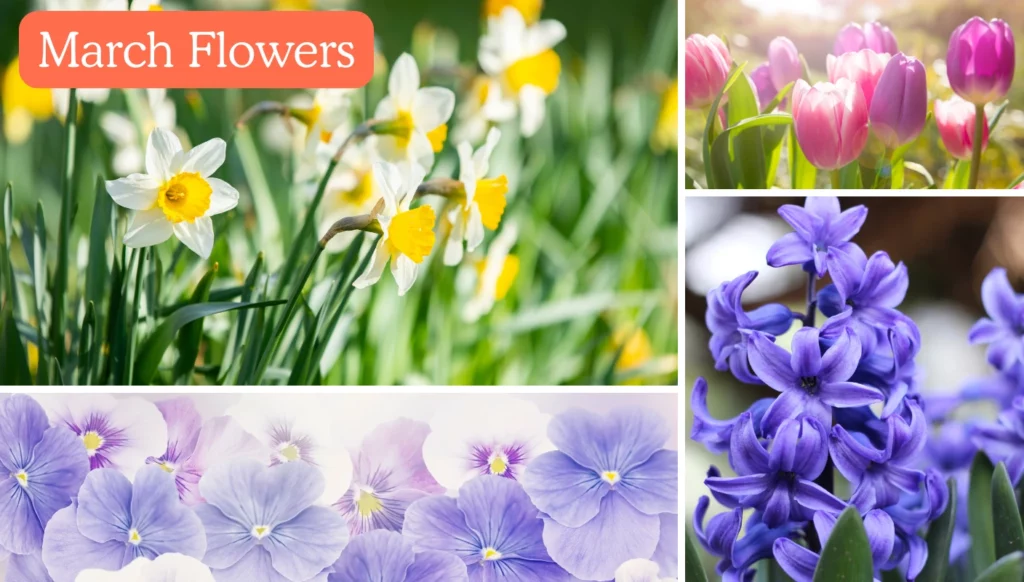
2. April
By April, the pace of growth picks up quickly. Soil has warmed enough to support broader flowering, and both native plants and cultivated ornamentals start showing off. Woodland gardens, in particular, thrive this month with shade-tolerant species taking advantage of the light before tree canopies fully leaf out.
- Azaleas
- Bleeding hearts
- Grape hyacinths
- Trilliums
- Dogwoods
- Lungwort
- Brunnera
- Virginia bluebells
- Tulip trees (liriodendron)
- Redbuds
- Camassia
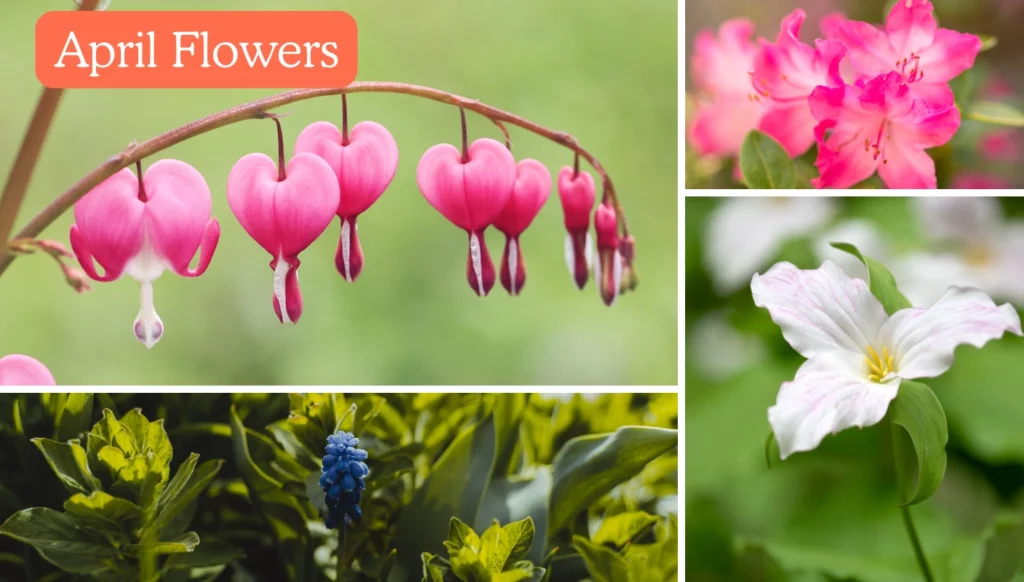
3. May
May is often the peak of spring color. Many flowering shrubs reach full bloom, and early summer perennials begin to emerge. It’s also a key month for fragrant flowers, making it a favorite time for cut flower enthusiasts. Garden beds are fuller, and pollinators become more active, drawn in by rich nectar sources.
- Peonies
- Lilacs
- Irises
- Lily of the valley
- Alliums
- Columbines
- Bearded iris
- Rhododendrons
- Clematis
- Sweet William
- Baptisia
- Catmint
- Mock orange
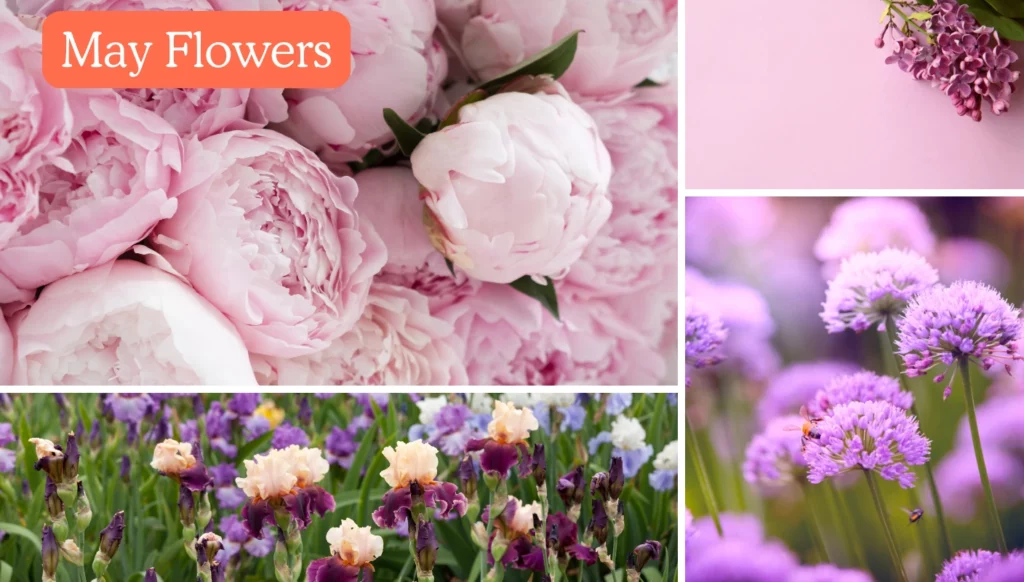
Summer Flowers (June – August)
Summer is when the garden reaches its fullest expression. With long days and intense sunlight, heat-tolerant flowers take center stage. These bloomers thrive in warm soil, attract pollinators, and often produce vivid color well into early fall.
4. June
In early summer, the garden shifts into full bloom. This is when many classic perennials and ornamental shrubs hit their stride, filling spaces with layered color and texture.
- Roses
- Hydrangeas
- Poppies
- Delphiniums
- Coreopsis
- Clematis
- Shasta daisies
- Yarrow
- Salvia
- Foxgloves
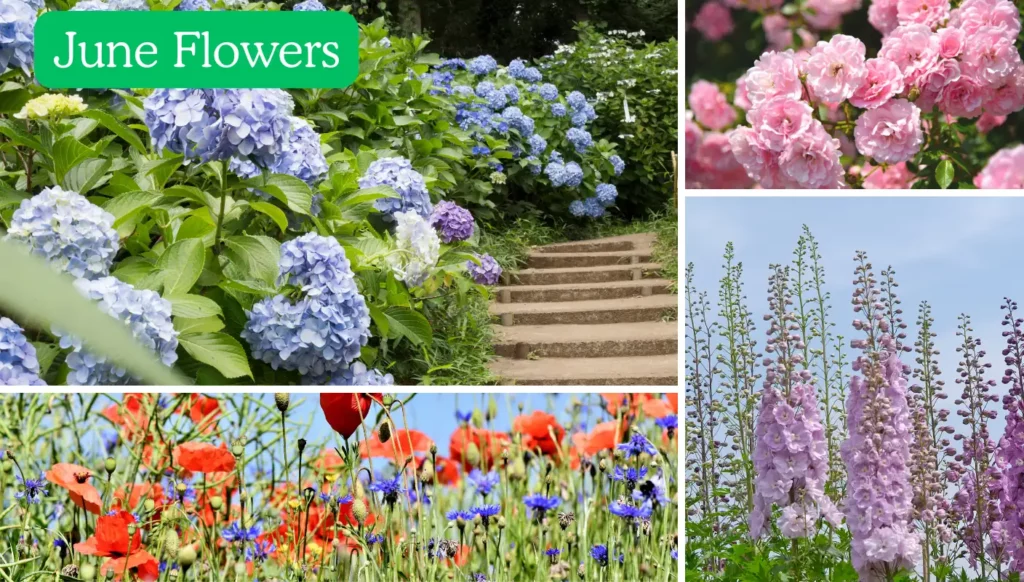
5. July
As temperatures rise, flowers that love full sun take over. Many July bloomers are also long-lasting cut flowers, making them favorites for both gardeners and florists. According to the seasonal flowers guide, these heat-resistant varieties tend to thrive with minimal care and consistent sun exposure.
- Zinnias
- Daylilies
- Snapdragons
- Marigolds
- Blanket flowers
- Coneflowers
- Black-eyed Susans
- Bee balm
- Petunias
- Lantana
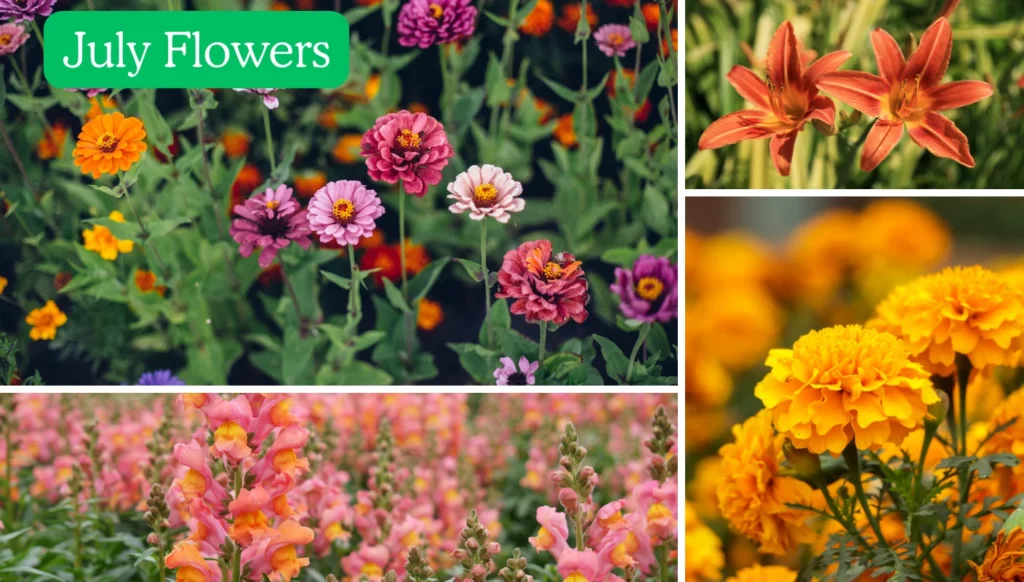
6. August
Late summer calls for resilient bloomers that can handle both heat and dry conditions. These flowers keep gardens lively as the season winds down.
- Cosmos
- Gerberas
- Sunflowers
- Globe amaranth
- Tithonia (Mexican sunflower)
- Sedum
- Verbena
- Russian sage
- Canna lilies
- Celosia
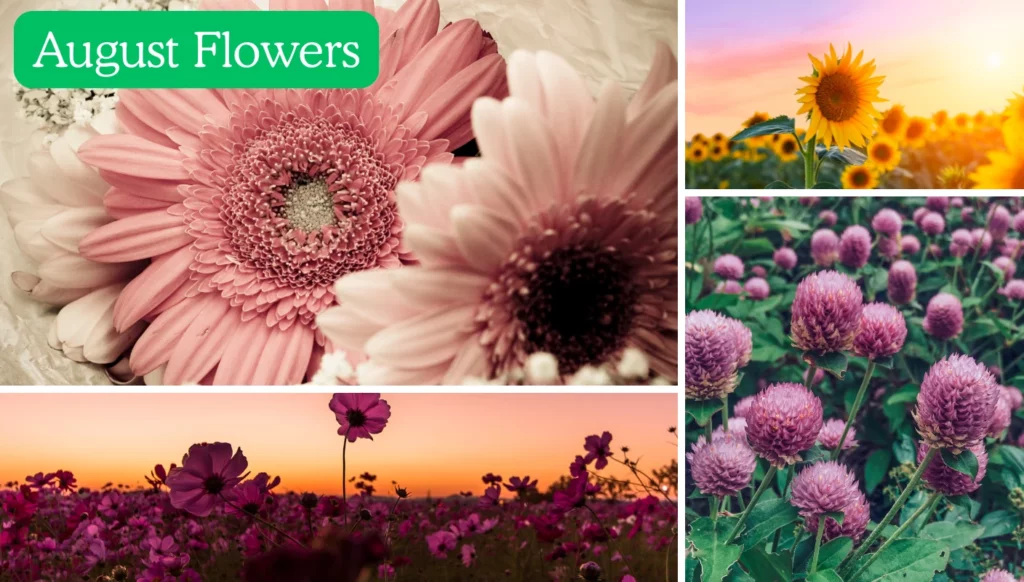
Fall Flowers (September – November)
Fall brings cooler temperatures, shorter days, and a shift toward deeper tones and tougher plants. While some summer flowers may linger, this is the time when cold-hardy bloomers and late-season perennials take the lead. Fall flowers are not only beautiful but also resilient, designed to handle fluctuating weather and early frosts.
7. September
As summer fades, early fall flowers bring a rich mix of gold, burgundy, and violet tones. These blooms thrive in cooler air and give gardens a fresh wave of color.
- Chrysanthemums
- Asters
- Pansies
- Japanese anemones
- Sedum
- Helenium
- Toad lilies
- Caryopteris
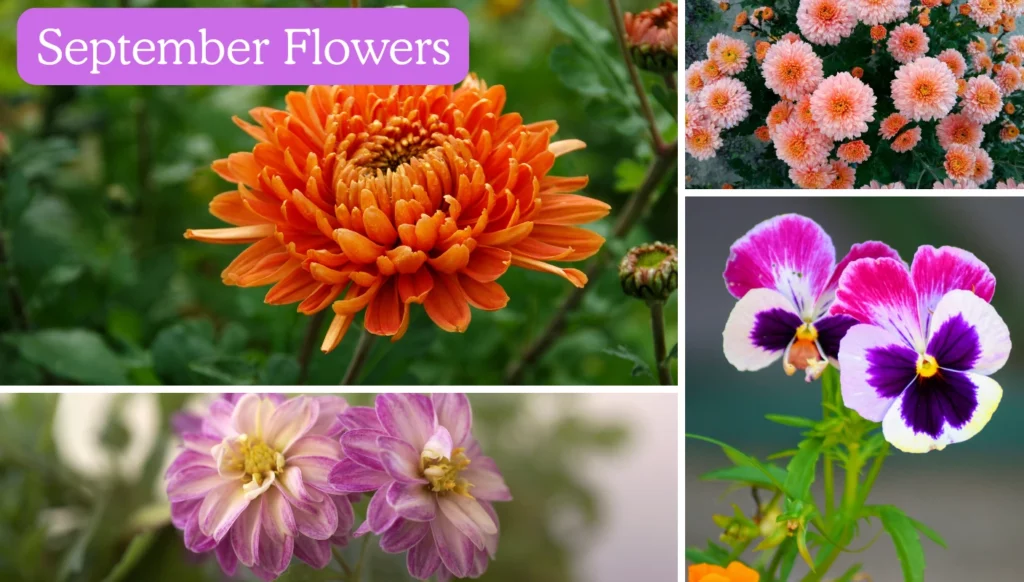
8. October
Mid-fall marks the final push of outdoor blooms in many regions. Plants that tolerate light frost and cooler soil dominate this stretch of the seasonal flowers guide, providing long-lasting beauty in both containers and garden beds.
- Sunflowers
- Autumn crocus
- Hibiscus
- Ornamental cabbage
- Goldenrod
- Mexican bush sage
- Montauk daisies
- Rudbeckia
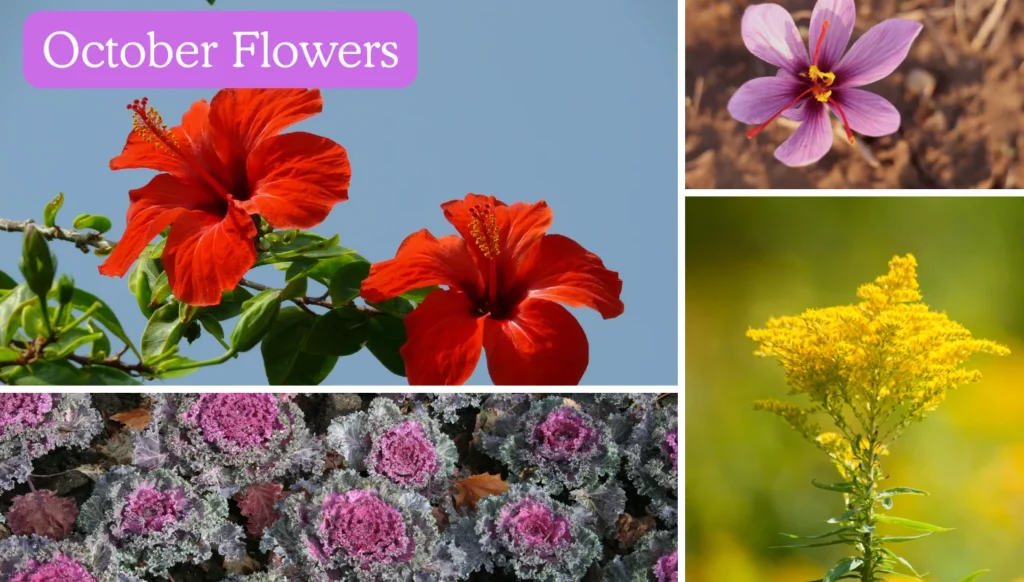
9. November
In late fall, color becomes more subtle, but certain hardy plants still bloom reliably. These flowers thrive in protected areas and can even survive early snowfall with minimal damage.
- Hardy mums
- Violas
- Calendula
- Sweet alyssum
- Pansies (reblooming)
- Snapdragons (fall-blooming varieties)
- Cyclamen
- Winter jasmine
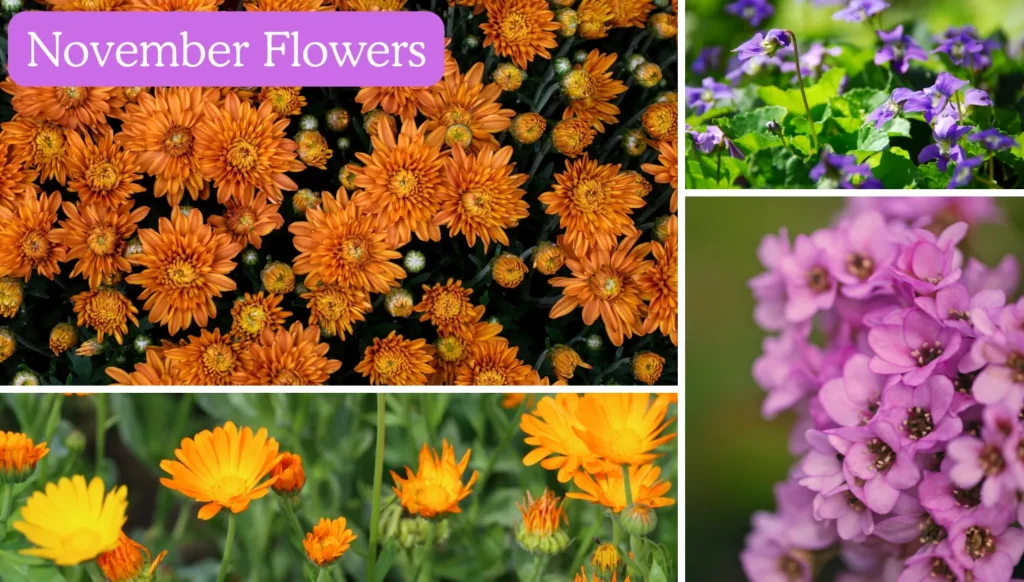
Winter Flowers (December – February)
Winter may seem quiet, but certain flowers continue to bloom, even when daylight is short and frost lingers. Some appear outdoors in sheltered spots, while others thrive indoors or in greenhouses. These cool-season bloomers bring subtle color and structure when most of the garden is resting.
10. December
Early winter brings gentle blooms and a charming evergreen presence. Many winter flowers emerge low to the ground or appear in sheltered borders, adding life to otherwise bare landscapes.
- Paperwhites
- Winter heather
- Snowdrops
- Mahonia
- Hellebores
- Winter jasmine
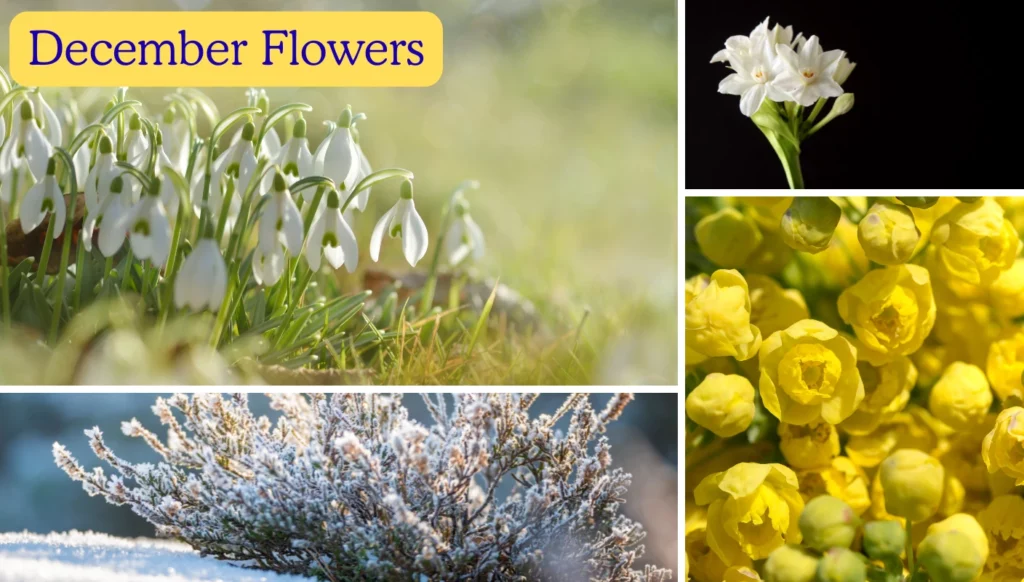
11. January
Midwinter can still surprise you with cold-tolerant flowers. According to the seasonal flowers guide, this is a great time to appreciate structure, scent, and color from plants that thrive in the chill.
- Witch hazel
- Lenten roses
- Calendula
- Edgeworthia
- Pansies (overwintering)
- Camellia sasanqua
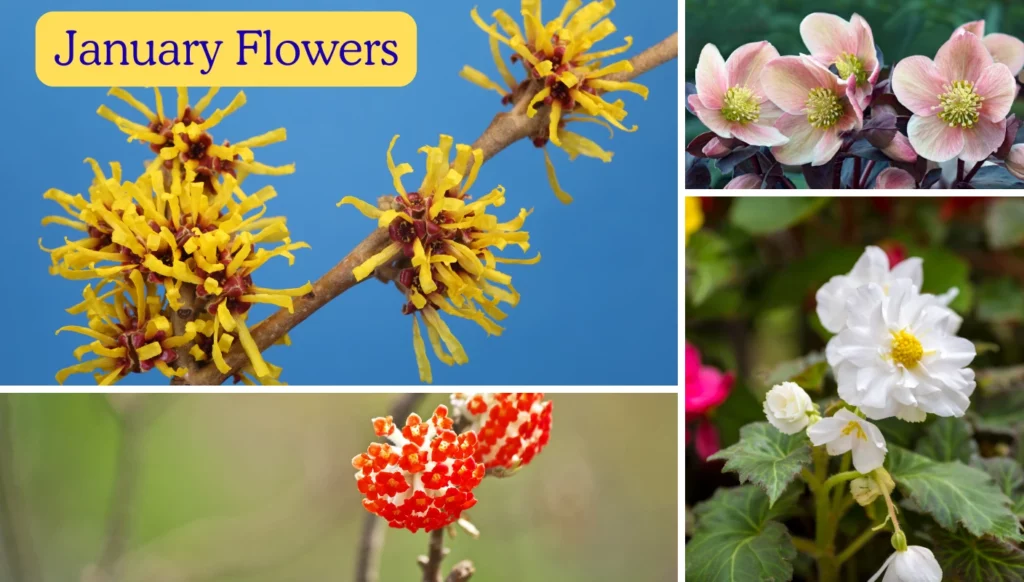
12. February
Late winter brings early signs of spring. In many regions, this is when buds swell and fragrance returns, especially if you grow indoors or in mild zones.
- Jasmine
- Gardenias
- Camellias
- Primroses
- Cyclamen
- Winter honeysuckle
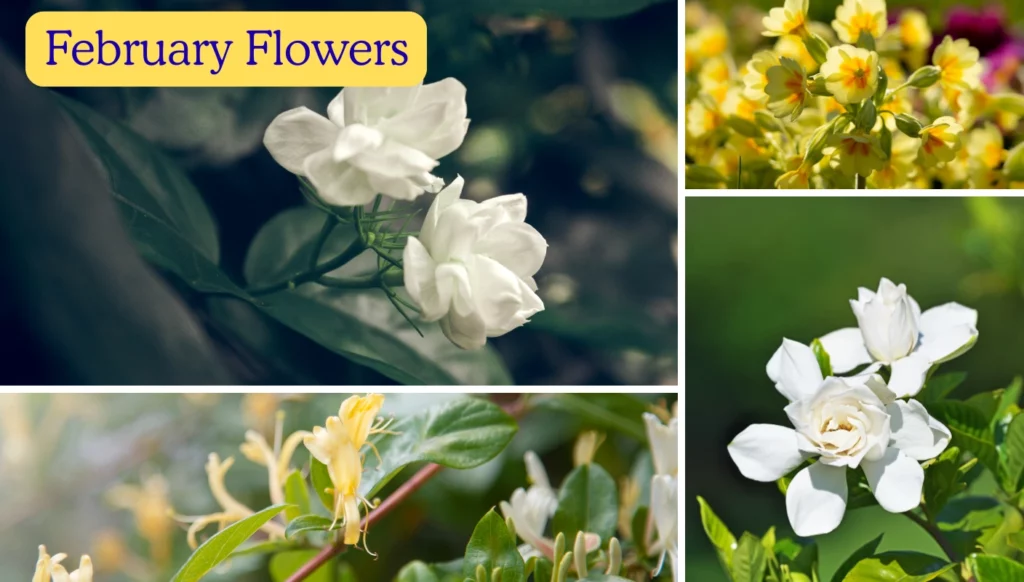
Year-Round Flowering Plants
Some plants bloom almost nonstop with the proper care, making them ideal for warm climates, greenhouses, and sunny balconies. These are great options when you want color beyond the typical growing season.
Common year-round bloomers include:
- Geraniums (in frost-free zones)
- Hibiscus
- Bougainvillea
- Kalanchoe
- Impatiens (in warm, shaded areas)
- Crown-of-thorns
- African violets (indoors)
These plants thrive in mild temperatures or indoors, where light and moisture are controlled. The seasonal flowers guide recommends them for gardeners looking to maintain continuous color throughout the year.
Tips to keep them blooming:
1. Provide at least 6 hours of bright light daily (natural or grow lights).
2. Use well-drained soil and avoid overwatering.
3. Fertilize lightly every few weeks during active growth.
4. Prune or deadhead spent blooms to encourage new flowers.
With the correct setup, these plants can brighten your space in every season. Use this section of the seasonal flowers guide to choose varieties that fit your climate and growing conditions.
Conclusion
We hope this detailed guide will help you enjoy each season with flowers that complement the weather and your space. The seasonal flowers guide is here to give you clear, reliable ideas whether you’re planning, planting, or shopping. Want help identifying blooms in real time? Try using the Planteyes app.
FAQs
What flower blooms all year round?
Geraniums, hibiscus, bougainvillea, and kalanchoe can bloom year-round in warm climates or with proper indoor care.
How can I tell which flowers are blooming in my area right now?
Check local bloom maps or use a plant ID app like Planteyes to see what’s flowering near you in real time.
When is the best time to plant summer flowers?
Early to mid-spring is ideal, as it allows roots to establish before the summer heat arrives. Ensure that you plant after the last frost.
What’s the easiest way to keep flowers blooming longer?
Deadhead faded blooms regularly, water deeply but less often, and feed your plants with balanced fertilizer during active growth.


